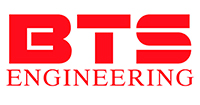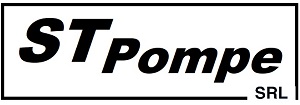2024 — Prom-nasos.com.ua
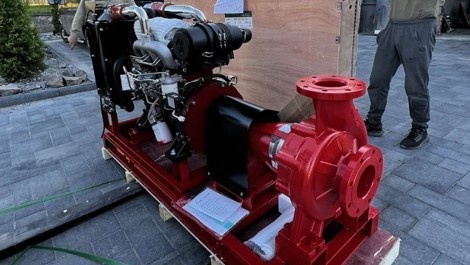
Irrigation is used to increase agricultural yields, especially for bulb crops such as onions.
Heated soil at the time of planting, regular watering of onions and the right choice of irrigation system , especially in hot and dry summer, supports the development of rape heads and increases total yield. Irrigation is the most advanced method of irrigation today.
Our regular customers used pumps driven by the tractor take-off shaft , but constant loading tractors for irrigation does not always justify itself. Therefore, it was decided to purchase a diesel pumping station for irrigation to irrigate 70 hectares of onions.
The diesel pumping station was delivered with the parameters of 180 m3 and a pressure of 89 meters maximum.
This high pressure and flow rate is provided by a 75 kW 3000 rpm diesel engine.
The diesel engine is equipped with a system for monitoring operating parameters and is equipped with a MEBAY controller:
Engine revolutions;
Oil pressure;
Coolant temperature;
Charge voltage of the battery;
Monitoring of operating hours, for timely replacement of oil and filters and maintenance.
Shipment of a diesel pumping station for irrigation
We are grateful for the cooperation of our customers! May it serve to increase the harvests and wealth of our agrarians and the entire team! We wish peace and good to everyone!
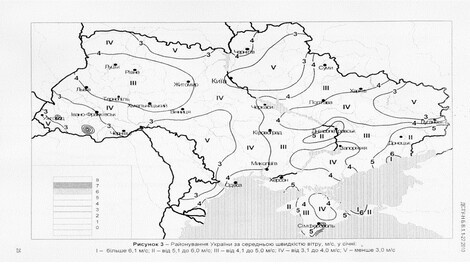
When deciding whether to connect the inverter to the grid or directly to the load, it is important to understand the functional differences, advantages and disadvantages of each configuration.
1. Connecting the inverter to the grid (grid-connected inverter)
Advantages:
Net metering: Excess electricity generated by your system can be sold back to the utility grid, often earning credits on your electricity bill.
Energy storage: The grid acts as a virtual battery, storing excess energy and providing it when your generation is low.
Effectiveness: generally there is no need for expensive battery storage systems. Reduced environmental impact: Efficiently uses renewable energy sources and helps reduce the overall carbon footprint.
Disadvantages:
Regulatory Compliance: Requires compliance with local utility codes, permits, and sometimes additional equipment, which can be expensive and complex.
Mains Dependency: If the grid goes down (such as during a power outage), a grid-connected inverter system will typically not provide power unless there is a backup battery.
Variable energy costs: Energy prices and policies can change, affecting the financial benefits of selling excess electricity.
2. Connecting the inverter directly to the load (autonomous inverter)
Advantages:
Network independence: ideal for remote locations where network connectivity is not possible or reliable.
Energy Security: Provides power even during power outages, making it suitable for critical applications that require uninterrupted power.
Autonomy: full control over the production and consumption of electricity without dependence on utility companies.
Cost savings in remote areas: avoids the potentially high costs of extending network infrastructure to remote locations.
Disadvantages:
Energy storage requirements: A battery is usually required to provide a stable power supply when generation is low, which can be expensive and require maintenance.
System complexity: Managing an autonomous system can be more complex due to the need for energy storage, backup generators, and ensuring that power supply matches demand.
Initial Investment: Higher initial costs due to the need for batteries and possibly additional equipment such as charge controllers.
Summary of differences:
Grid-tied inverter: connects to the grid, provides clean metering, reduces dependence on batteries, but is dependent on the grid for power continuity during outages.
Standalone inverter: connects directly to the load, requires a battery for continuous power operation, provides independence from the utility grid, but requires higher initial and maintenance costs.
Choosing the right option: Consider a grid-tied system if: You have reliable grid access, want to reduce your electricity bill with net metering, and prefer a simpler system without the need for battery storage.
Consider a standalone system if: You are in a remote area without reliable access to the power grid, you need energy independence and security, and you are willing to invest in and maintain a battery storage system.
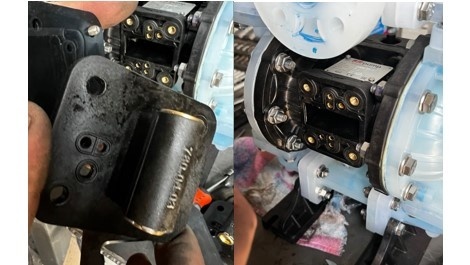
BASIC RULES
Effective and trouble-free operation of a diaphragm pump , like any other type of equipment, must begin with installation in accordance with all the rules. This will make your life much easier. A solid foundation, correct pipeline geometry, sufficient diameter of pipes - at least one aspect was missed, and now vibrations, increased pressure and other negative factors begin their destructive activities. Maintenance of the diaphragm pump does not tolerate neglect of the instructions. It is necessary to tighten the housing nuts before commissioning - do this. Testing is provided with measuring the flow and pressure of the unit at certain parameters of air flow and pressure - carry it out.
A common cause of breakdown of a diaphragm pump or a decrease in its productivity lies in the incorrect use of the pneumatic pump, or neglect of the operational requirements stated in the pump passport. The pneumatic diaphragm pump is simple in design and works with thick and viscous liquids, including glue, acids or food. Can pump abrasive particles with a diameter of up to 10 mm. But if used incorrectly, advantages can turn into disadvantages.
Before starting to operate a diaphragm pump, it is of great importance to select the correct elements of air preparation, filters, moisture separators, pressure reducing valves, etc. Pressure filters include air filters (inlet, fine, inline, high pressure or stainless steel) and water filters. Air filtration using inlet filters removes coarse contaminants. Air filtration is at the level of 20 um, in the case of large filters - 50 um. Inlet filters are installed immediately after the compressor. It is worth remembering that frequent replacement of filter cartridges improves the quality of the compressed air at the outlet. In the case of thin filters, installation should be carried out at the compressed air intake points. Their task is to prepare the air under the specified conditions. Fine filters should always precede the inlet filter. Depending on the application, air filtration is 5 microns, 0.3 microns or even 0.01 microns. On the other hand, in-line filters are installed where there is no physical space for standard filters. They are very often used in front of pneumatic tools. The air filtration of such filters is 20-30 microns. Improper preparation of the air supplying the pump can lead to failure of the pump, or its main parts, such as rubber products and, in general, the pneumatic valve of the diaphragm pump.
Installation of an air operated diaphragm pump
Before the pump, air preparation ( reducer, filter-moisture separator, throttle ).
Pneumatic line of sufficient diameter.
Only horizontal placement of the pump.
Since diaphragm pumps are self-priming, it is important for them to ensure tight connections .
Before turning on, be sure to check that there are no foreign objects in the pump , that the seals have been broken and that the screws are tightly tightened .
The diaphragm pump can be installed both on the floor and on the ceiling, it is important that the pump is installed horizontally (standing on its feet), the fluid supply manifold is at the top of the pump (pay attention to the arrows that are drawn on the pump, they indicate the correct direction, the arrow should point upward as shown in the figure).
! VERY IMPORTANT ! Such an industrial pump should be located as close as possible to the place where the liquid is pumped and from where it is taken. This will ensure maximum performance. As you know, the longer the hoses and the more viscous the liquid, the greater the deviations in pump performance from those stated in the passport.
Starting the diaphragm pump
The valve balls must be moistened with hydraulic fluid before starting the pump. The pump must be dried from water if water is not allowed to enter the pumped liquid. Initially, there may be water in the diaphragm pump, since its functionality is checked by pumping water before shipping.
Basic rules for servicing a diaphragm pump
Many aspects of using a diaphragm pump are intuitive. But we want to focus on the key ones.
A superficial inspection of the pump should be done at least once a month to replace filters as necessary and check the integrity of the pump. If there is liquid under the pneumatic cap, this is a bad sign; most likely a crack has formed somewhere and this may soon lead to the final breakdown of the pump. In this case, you can immediately contact us to replace damaged parts, inspect, or, in extreme cases, purchase a similar pump.
Replacement of parts is carried out in a clean and dry room. Parts are replaced only with new, original ones.
Before disassembling the diaphragm pump (depending on the pumped liquid), the technician must wear gloves and goggles , in case of working with toxic substances.
Before disassembling the pump, you need to WASH it to get rid of toxic liquids as much as possible.
Before disassembling after washing the pump, it is necessary to DISCONNECT from the compressor, DISCONNECT the inlet and outlet pipes.
Then you can proceed directly to disassembling the diaphragm pump, if necessary.
! VERY IMPORTANT ! If the pump is rarely used, or you plan to postpone the operation of the equipment for some time, It is NECESSARY to flush the pump of the pumped substance to avoid sticking of the channels.
AIR CONNECTION DUCT HUMIDITY
The presence of water in the compressed air system can cause problems such as freezing of the water or icing of the discharge line, causing the pump to run unevenly or stop. These problems can be overcome by using a point-of-use dehumidifier in addition to the user's air drying equipment. Air drying equipment will remove water and eliminate problems such as freezing or icing.
The air pressure should not exceed 7 bar. The pump must be supplied with air at a pressure and flow rate to provide the desired performance.
AIR VALVE LUBRICATION
The pump should be flushed after each use to prevent damage if the pump is used to pump liquids containing suspended particles that will settle and harden over time while the pump is stationary. (Otherwise, product left in the pump between uses may dry out or settle. This may cause problems with the diaphragms and check valves when restarted.) The pump should be completely drained after each use, especially in freezing temperatures.
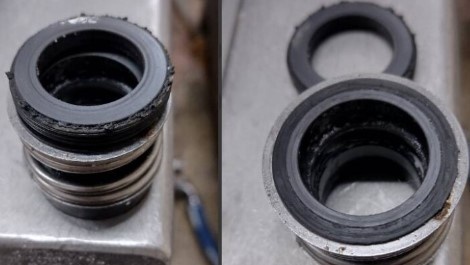
Inoxpa Hyginox SE series centrifugal pumps are compact, with hermetic connection and sanitary design. They are used in factories where sterile conditions are necessary when pumping non-abrasive liquids of low and medium viscosity (up to 200 Sp).
The body and impeller are made of AISI 316L cold-pressed stainless steel, which makes it suitable for use as the main process pump in:
dairy industry
brewing, winemaking
production of vegetable oil
production of drinks, juices
in other areas of the food industry
pharmaceuticals
cosmetic industry, etc.
The liquid is allowed at a temperature of 120°C (140°C SIP, max- 30 min).
Mechanical seals and others in contact with the product are made of EPDM.
The default is:
Single internal face seal EN 12756 l1k (according to FDA and EC 1935/2004).
Moving part - Graphite (C).
Immovable part - silicon carbide (SiC).
Sealing elements – EPDM.
Options:
Friction pairs - SiC/SiC.
Sealing elements – FPM.
In our case, the cause of failure of the end seal of the pump Inoxpa 1G110-4452025CE EN12756 L1K MECHANICAL SEAL SIC/SIC/EPDM 25 FDA CE 1935/2004 (analog AESSEAL-B012-ADY1-025) became the so-called "dry run".
The pump was running without fluid for some time, and the internal parts of the pump were subject to increased friction without sufficient lubrication. The resulting heat caused the seal to fail. Most dry run failures occur when the pump is restarted after maintenance without checking that the pump is completely filled with liquid.
Just a few seconds of dry running can cause the mechanical shaft seal to most likely be permanently damaged!
Inoxpa 1G110-4452025CE mechanical shaft seal required - contact BTS Engineering!
March 27, 2024
Borehole pumps 4SD

Borehole pumps are reliable devices that are used to lift water from deep wells of different diameters or reservoirs. Deep pumps have become a necessary component of modern water supply systems, providing reliable water supply both in everyday life and in industry. 4SD pumps can be used in both vertical and horizontal (surface) positions.
To raise water to the surface from a well, the pumps are installed vertically and lowered into the well on a water-lifting pipe (plastic or metal) and additionally secured with cables.
To pump water from reservoirs, the pump can be installed in a horizontal position on a special stand with a cooling casing.
For efficient and trouble-free operation of pumps, they should be used with control panels. The pump control panel not only provides automation of water supply, but also provides protection against dry running, overload, and also protects against phase loss, phase imbalance, and overvoltage.

Pumps of a well-known manufacturer Allweiler ALLHEAT are intended for the circulation of heat carriers such as grease or hot water at high temperatures (water up to 207°C or thermal oil up to 350°C).
In particular, the NTWH/CTWH series pumps are single-stage horizontal centrifugal pumps with optimized bearing support, with spiral casing. Thanks to the long cooling section, no additional cooling is required. The massive slide bearing is pumped fluid lubricated, available in SSiC/SSiC or carbon/steel. The large area of the specially designed mechanical seal chamber prevents dry running. Before sealing the shaft, a safety gland and the following throttle section are installed.
The following shaft seals are used in these pumps:
Uncooled, balanced or unbalanced, according to DIN 24 960.
Mechanical seal
Product code U2.11A - balanced,
Product code U3.3A - unbalanced (Burgmann 951534 037797000 AQ1VGG).
Materials: moving ring - graphite A, counter ring - SiC, silicon carbide Q, spring - CrNiMo steel, sealing rings - fluorine rubber (FPM) V.
















